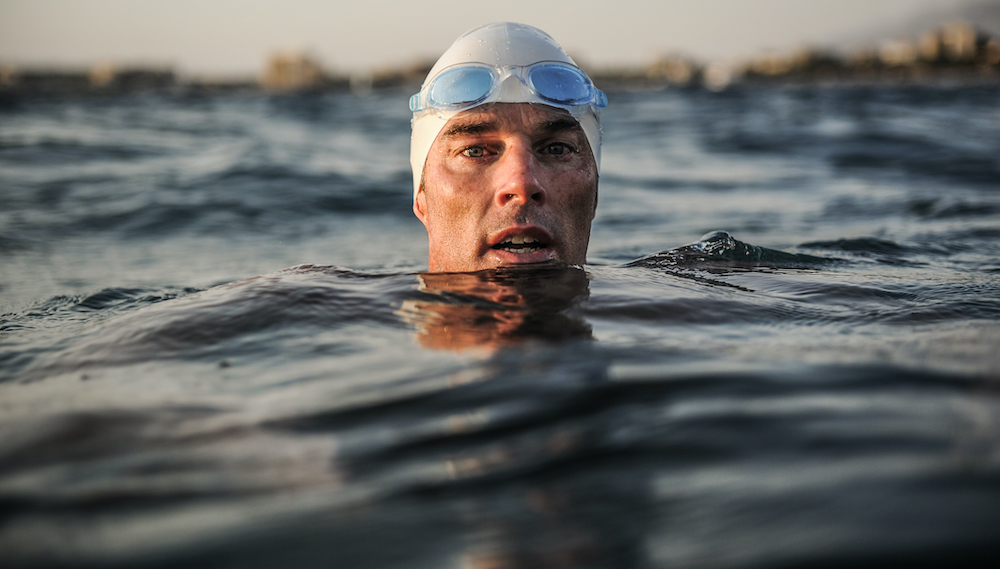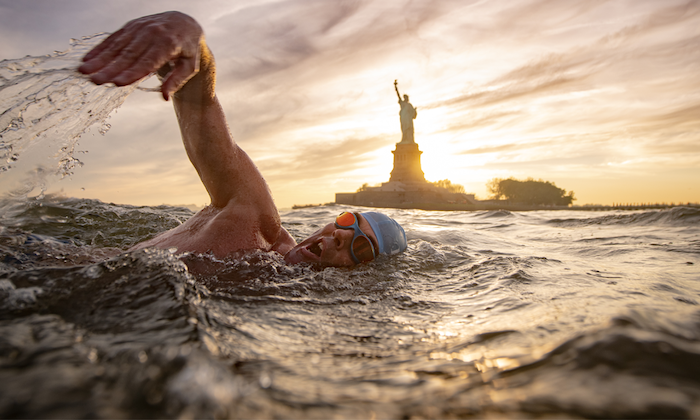
Lewis Pugh's Hudson River Swim to Highlight Importance of Healthy River Ecosystems
July 28, 2023
British endurance swimmer, climate activist and UNEP Patron of the Oceans, Lewis Pugh, is once again using his platform to promote action on the environment. From August 13 to September 13, he will undertake his longest-ever river swim in an effort to highlight the critical importance of river health to the overall health of the world’s oceans and global environment.
Pugh has swum in the most challenging environments on earth from the Antarctic to the North Pole, to the Red Sea and the Himalayas. This time he will attempt to become the first person to swim the full length of New York's Hudson River in the US, unassisted. His goal is for all rivers to be drinkable, fishable and swimmable.
In 2009, Pugh became the first Beyond Sport Global Award winner in the Climate category for his environmental advocacy. His advocacy work for marine protected areas, biodiversity, pollution and combating the effects of climate change in and on our oceans has been instrumental in protecting over 2.2 million kilometers of ocean, an area larger than Western Europe.
The 315 mile/ 507 km Hudson River swim will be one of his most challenging attempts, timed to wrap up shortly before September 20 during the UN General Assembly Week, Climate Week NYC 2023 and the UN Secretary General’s Climate Ambition Summit. At the Summit nations will begin to ratify the world's first High Seas Treaty. The historic treaty outlines rules to protect biodiversity in international waters. The pact is key to the United Nation’s efforts to put 30% of the world's land and seas under environmental protection by 2030, a goal which was set last December.
“If we want healthy oceans, we also need healthy rivers — it’s that simple,” said 53-year-old Pugh. “Clean rivers are essential in the fight for global sustainability; indeed, our very existence depends on fresh water, clean air and a habitable planet. The good news is that rivers are accessible to most people, and we know what it takes to get them healthy. I specifically chose the Hudson for this swim because of the environmental progress that’s been made on the iconic waterway in recent years. Much work is still required, but tangible improvements have been made, setting an example for restoring rivers around the world.”

The Hudson River remains the largest Superfund site (locations polluted with hazardous materials) in the United States classified by the US Environmental Protection Agency (EPA). This is largely due to the 1.3 million pounds of polychlorinated biphenyl or PCBs (used in the manufacture of electrical devices) that were dumped into the river between 1947 and 1977. The EPA scheduled several clean-up projects of the river from 2002, dredging highly contaminated areas. It also has plans to implement sediment programs that look to re-inhabit the river with fish species, sediments and plants in 2023 and 2024.
The Hudson was widely considered hazardous, but this was reversed through the Clean Water Act of 1972. It is now mostly safe to swim in but infections from bacteria are still possible. According to a medical guide prepared for the swim, Pugh could be at-risk of possible infection from human sewage and rat infestation to poisoning from chemicals like mercury, which has been left over from the Hudson River's industrial past.
“Refuse, sewage, chemical and plastic waste doesn’t just pollute rivers and harm the species that live in them; these contaminants are carried on to the sea where they do more damage,” said Inger Andersen, Executive Director of the United Nations Environment Programme. “Just as we must keep our own arteries unclogged for our health, we must keep the planet’s arteries unclogged for its health.”
The expedition will kick off at Lake Tear of the Clouds high in the Adirondack Mountains, the Hudson’s source, and conclude at Battery Park in lower Manhattan. The complexity of the swim involves dramatic topological shifts, powerful river currents and potentially toxic sewage runoffs during heavy rains. Pugh will make the swim unassisted, which means he will only be in a speedo, cap and goggles compared to a wetsuit, snorkel, gloves, flippers, hand paddles etc.
Source: Lewis Pugh Foundation, New York Times